Spain & Portugal autumn hiking destinations - where to go in Sept/Oct/Nov
In this article, we suggest 6 destinations for this autumn, each with a standout hiking route. Choose between Spain and Portugal and enjoy the best these countries have to offer.
September
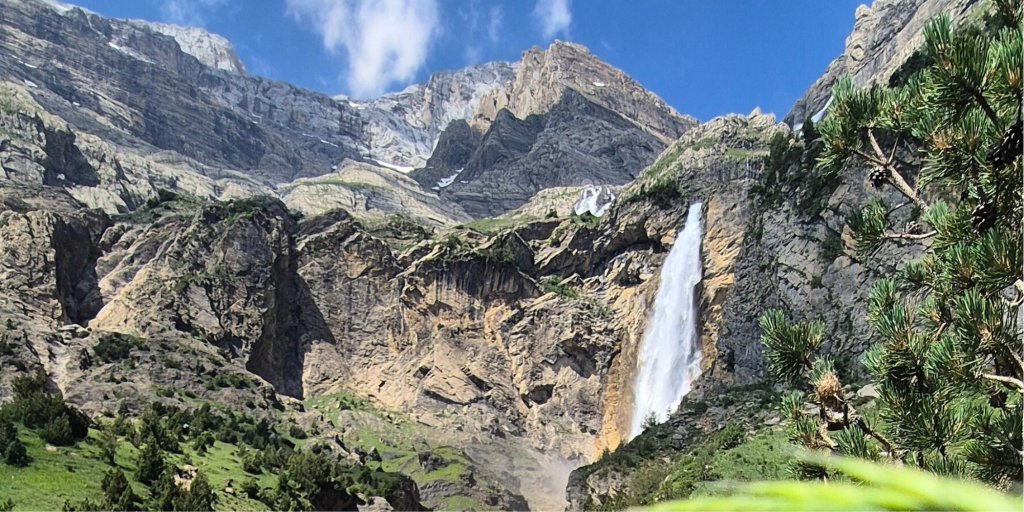
Ordesa and Monte Perdido National Park
Autumn Temperatures in Ordesa
- Average temperature in September: 17ºC/62ºF (low of 13ºC/55ºF)
- Average temperature in October: 13ºC/55ºF (low of 9ºC/48ºF)
Recommended route: Llanos de La Larri, Cinca Waterfall, and ascent to Ibón de Marboré
10km/6,2mi, 680m ascent/descent, intermediate level
This route could be summarised as "the waterfalls route" if done in late spring or early summer. However, due to rain and melting snow, some streams become larger and can make hiking difficult. September, on the other hand, allows you to cross riverbeds and streams without issue, and you can begin to see the autumn colours in the Valle de Pineta.
If you are not staying at the Parador de Bielsa or the Pineta refuge, you can drive up and park in the municipal parking lot (€3/day). A 4-minute walk away, you will find the Hermitage of Our Lady of Pineta, the starting point of the route.
After an initial forest climb that gains 300 meters in elevation within minutes, the view opens up, and you can enjoy the rocky "amphitheater" overlooking the Pineta Valley from above. From there, take the trail toward the Cinca Waterfall for a panoramic 360-degree view. Once you have reached the waterfall, you can choose to ascend about 1,000 meters further and touch the waters of the glacial lake Ibón de Marboré, located at 2,580 meters above sea level. It is a tough climb, but worth the effort. If it seems too much, simply follow the wide trail down into the valley to return to the starting point.
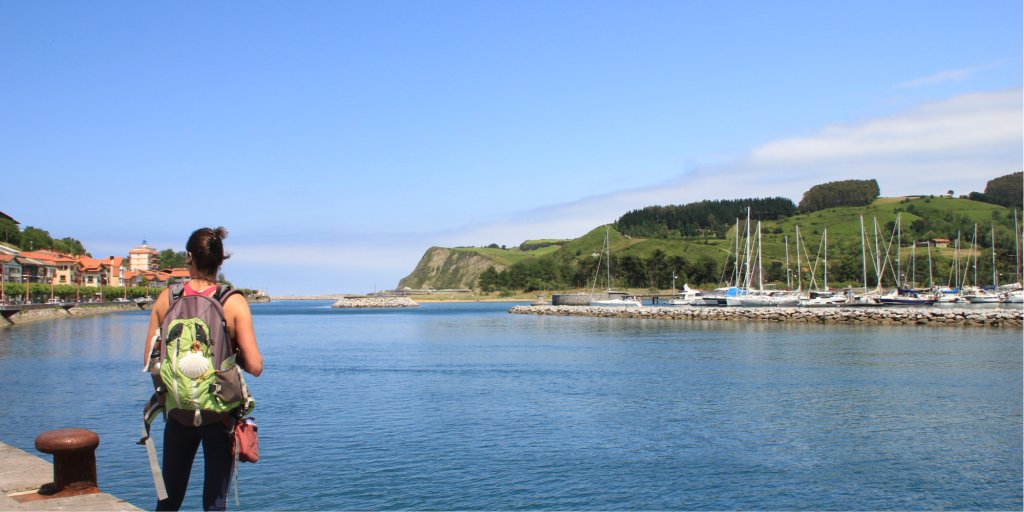
The Basque Coast
Autumn Temperatures on the Basque Coast
- Average temperature in September: 20ºC/68ºF (low of 15ºC/59ºF)
- Average temperature in October: 16ºC/61ºF (low of 13ºC/55ºF)
Recommended route: The Northern Way (Camino del Norte) from Irún to Deba
18–24 km/11-15mi, 500 - 700 m of ascent and descent, intermediate level
This section of the Northern Way takes you along the Basque coast, climbing and descending hills and cliffs, crossing forests, and following narrow coastal paths high above the sea. It is considered one of the most demanding parts of the Camino de Santiago (along with the Primitive Way), due to its elevation changes, but it’s absolutely worth it—and very easy to follow thanks to the yellow way markers.
If you do not have enough time to walk the full Camino, you can base yourself in San Sebastián/Donosti and use public transportation to hike shorter sections. A great option is the stage from Hondarribia to Donosti (20 km, 620 m ascent and 925 m descent, approx. 7.5 hours). Midway, in Pasaia, you’ll need to cross a river by boat.
The next day, you can start walking from San Sebastián toward Orio (22.8 km, 515 m ascent and descent), spending the entire day walking by the sea. Once in Zarautz, you can take a bus or train (a 20-minute ride) back to your accommodation.
October
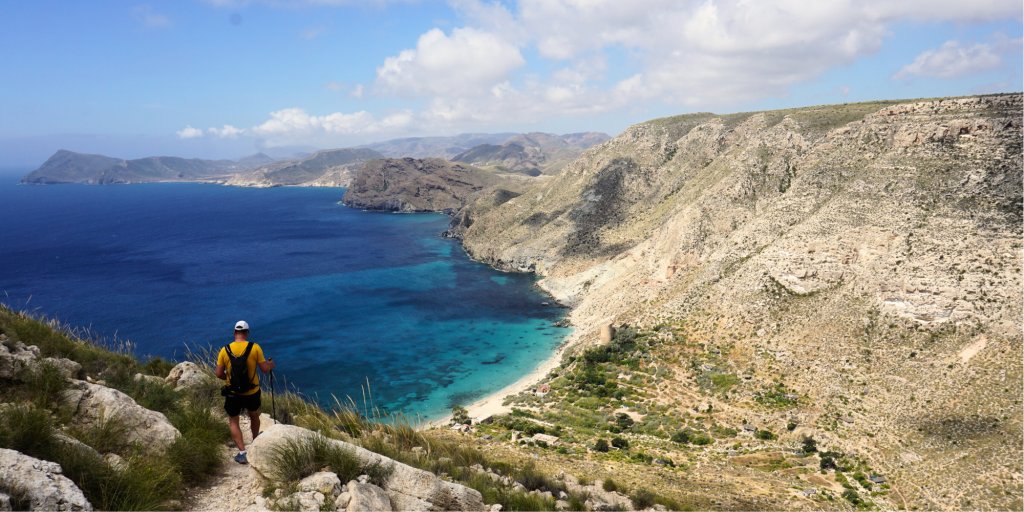
Cabo de Gata–Níjar Natural Park
Cabo de Gata is one of the Mediterranean’s natural gems—a unique volcanic landscape in the Iberian Peninsula. Its cliffs, hidden coves, and salt flats create a protected ecosystem that is home to many bird species. Wind and sea erosion have shaped the rocks into a rugged, arid environment full of contrasts.
Due to the high temperatures, hiking in summer is not recommended, especially since there is little shade along the trails. Winters in the area are mild and pleasant, but many services - such as hotels and restaurants - close for the season. For these reasons, spring and autumn are the best times to explore Cabo de Gata–Níjar, offering pleasant weather and available services.
Autumn Temperatures in Cabo de Gata
- Average temperature in October: 21ºC/70ºF (low of 17ºC/62ºF)
- Average temperature in November: 19ºC/66ºF (low of 13ºC/55ºF)
Recommended Route: From Agua Amarga to Rodalquilar
19 km/11.8mi, 530 m ascent/descent, 7 hours, intermediate level
The trail from Agua Amarga to Rodalquilar captures the essence of Cabo de Gata. You will walk through semi-desert terrain, crossing dry riverbeds, and suddenly come across lush vegetation—almost like an oasis. Highlights of this route include Cala de San Pedro (pictured) and Playa del Playazo, just before reaching Rodalquilar. The contrast between the crystal-clear waters and the area’s volcanic past is truly striking.
Keep in mind that you will not find any services along the route until you reach the village of Las Negras, shortly before Rodalquilar, so it is a good idea to bring water and snacks.
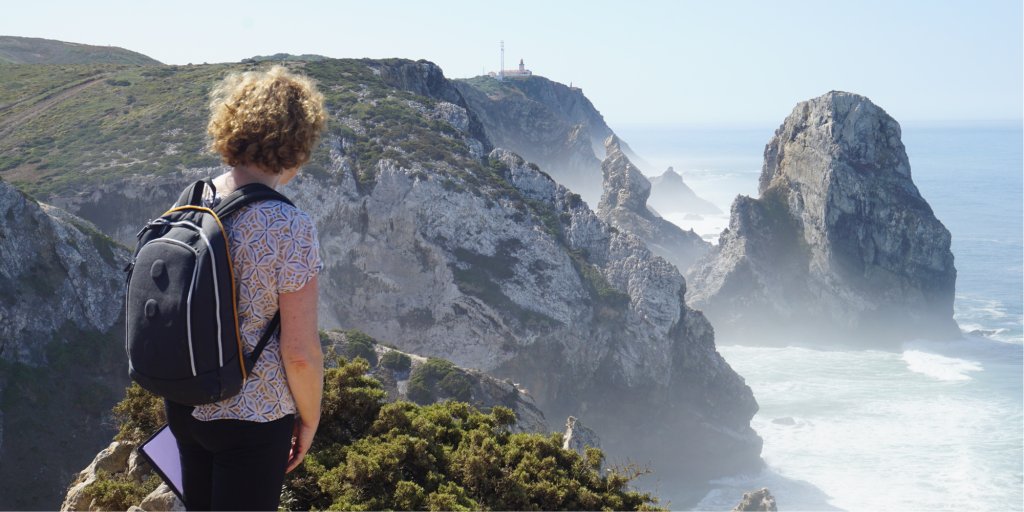
Sintra Natural Park - Cascais
The Sintra – Cascais Natural Park combines culture and nature in a fairytale setting, with colourful palaces, forest trails that connect romantic gardens, and breathtaking routes along the Atlantic.
October is a perfect month to discover Sintra on foot - leaving the summer heat behind but still enjoying pleasant temperatures for hiking and even taking a dip at the beach. Another advantage is that the tourist season is coming to an end, so you will find fewer visitors - ideal for enjoying the many cultural highlights of the area, such as Sintra’s palaces and gardens, the true gems of the region.
Autumn temperatures in the Sintra - Cascais Natural Park
- Average temperature in October: 14°C/57ºF (minimum 11°C/52ºF)
- Average temperature in November: 18°C/64ºF (minimum 14°C/57ºF)
Recommended Route: from Amoreira to Praia Grande
16 km/10mi, 4.5 – 5 hours, 300 m ascent, 500 m descent, easy level
If you have already been to Sintra and visited the palaces (a must), leave the city and head north to the village of Amoreira. Here, you will find vineyards with a unique cultivation system - planted in sand and sheltered from the Atlantic winds.
Crossing farmland and pine forests, you will reach the fishing village of Azenhas do Mar, with white house’s strategically placed atop a cliff. From here, enjoy panoramic views from the cliffs and take a break to cool your feet in the water at Maçãs Beach.
You are just a short walk away from Praia Grande, where you can catch a bus back to Sintra.
November
La Gomera Island
La Gomera, like the rest of the Canary Islands, is a year-round destination thanks to its consistently pleasant temperatures. Since calima (dust haze from the Sahara) is more common in summer and makes hiking more difficult, autumn is a perfect time to take a few days off and explore the island. If you can only get away during the winter holidays, I recommend booking well in advance - especially if you plan to spend New Year’s Eve on the island.
La Gomera has some touristy and crowded areas, but its interior remains largely undiscovered and is truly worth exploring. It is full of hiking routes and trails, ravines with considerable ascents and descents, and within just a few days you can combine coastal paths with views of volcanic peaks, passing through ancient laurel forests (laurisilva).
Autumn temperatures in La Gomera:
- Average temperature in October: 25°C/77ºF (low of 20°C/68ºF)
- Average temperature in November: 23°C/73ºF (low of 18°C/64.5ºF)
Recommended route: from Chipude to Vallehermoso
14.5 km/9mi, 240 m ascent, 1100 m descent, 5.5–6 hours, medium level
This route starts at an altitude of just over 1,000 meters in the village of Chipude. If you decide to stay here, your only option is Hotel Sonia - the only accommodation in the area aside from a few rural homes. The hotel is simple, but the service is excellent and it has a restaurant, so you will not need to worry about dinner.
From the hotel, head north through El Cercado, a village known for its pottery tradition using pre-Hispanic techniques. The next section is striking due to the ravines, and suddenly, almost without noticing, you enter Garajonay National Park—and everything changes: ancient laurisilva forests, the jewel of the island.
You are almost at Vallehermoso - get ready for a steady descent. Once in Vallehermoso, you can return to Chipude by bus.
.png)
Madeira island
Autumn temperatures in Madeira:
- Average temperature in October: 22°C/72ºF (low of 17°C/63ºF)
- Average temperature in November: 19°C/66ºF (low of 15°C/59ºF)
Recommended route: circular trail at Ponta de São Lourenço
6,5 km/4mi, 3 h, 350 m ascent/descent. Easy level
Ponta de São Lourenço is a must-visit if you are in Madeira. It is a volcanic peninsula that contrasts with the lush greenery found throughout the rest of the island. It is the driest area, and at certain times of year, there is barely any vegetation.
Besides the uniqueness of walking along this narrow, rocky peninsula surrounded by the sea, the most spectacular part is the view of Madeira and watching planes arrive at the small airport. In the distance, you can also spot the island of Porto Santo.
For a break, I recommend grabbing a drink at the Casa do Sardinha beach bar—relax under the palm trees, enjoy the sound of the sea, and take in the stunning views.
Marketing, Web & Design
After studying in my hometown of Barcelona and spending several years abroad, I relocated in 2018 to Cabrales, a beautiful rural area in Northern Spain. I invite you to check out some photos of Cabrales to see the incredible views we enjoy from our office!
After a few years in reservations, I now manage the website and marketing for S-Cape Travel, where I handle design tasks, blog writing, and attend specialized travel fairs.


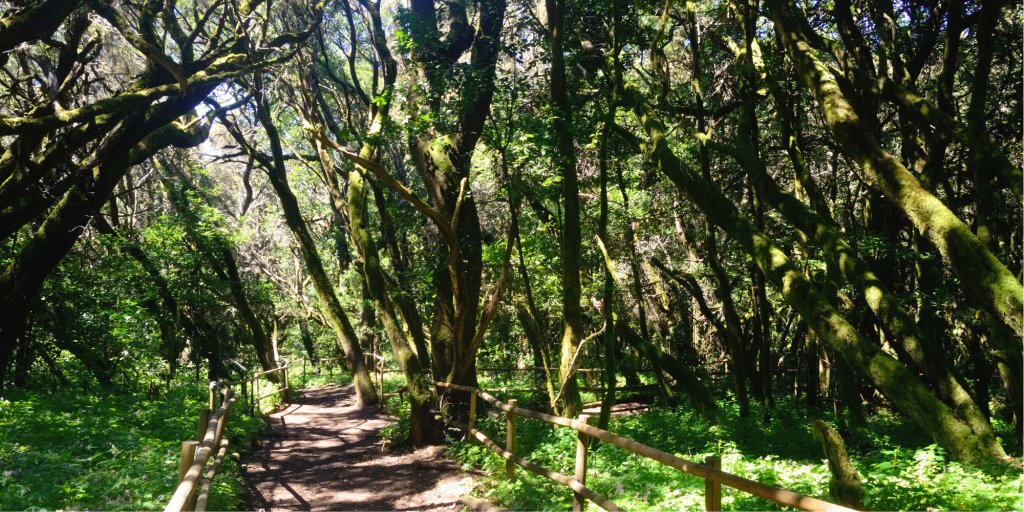
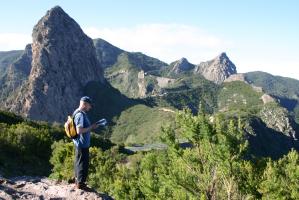




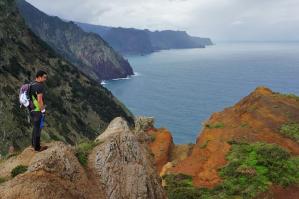




Opening hours: Mon-Fri 9:00am – 6:00pm (CET)
Opening hours: Mon-Fri 9:00am – 6:00pm (CET)